Cooking blends the pleasure of eating fresh food with science, nutrition, service to others and eventually, a whole lot of zen.
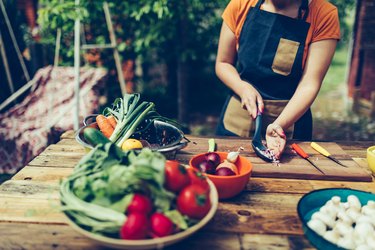
Ten years ago I couldn't cook a thing. I desperately wanted to but just didn't have the skills. Like a lot of us, I grew up on Rice-a-Roni with busy parents who stuck to a handful of family favorites that mostly came out of a jar. Between school, sports and work, there just wasn't time or, frankly, interest to branch out much further. Cut to me at 30 when making a special dinner for friends took watching a full episode of Barefoot Contessa, $80 at the store and at least three hours of toggling between a hot stove and my laptop. "Wait, when do I put the manchego cheese in?" My guests waited alone at the table, in dinner party purgatory, while I repeatedly trilled from the other room, "Almost done!"
Video of the Day
Video of the Day
I needed to start at the beginning, with simpler recipes that made sense to a new cook. Here's what I wish I knew then.
10 Supplies Every Home Chef Needs
Chef's knife. An eight-inch chef's knife is bigger than what you probably use now but once you get the hang of using it, you might not need another knife at all.
Mixing bowls. A three-to-five-bowl set should do the trick. I like the kind with a non-stick surface on the bottom but if your bowl (or cutting board) is sliding around, put a damp washcloth underneath. It'll hold like glue. Tip: Always use a bigger bowl than you think. There's nothing worse than ingredients overflowing.
Cutting boards. A nice wooden board makes quick work of slicing and dicing while a plastic board is easier to sterilize when cutting meat. For the latter, look for something that can go in the dishwasher.
Can opener. For obvious reasons. Tip: Rotate your can opener to cut along the TOP of your cans for a smoother edge that comes off every time without hitting snags. Look closely and you'll see a flat little plastic piece designed to hold your can opener in place for just this purpose.
Measuring cups and spoons (plus liquid). Dry ingredients like flour and sugar are measured in cups you scoop. Liquid ingredients like oil and water are measured in a glass measuring cup. That's because the
Non-stick skillet. This works for everything from eggs to pancakes and stir-fry. Just don't ever use a metal spatula on them.
Wood or silicone spatulas. For stirring anything from a nonstick pan to a stock pot.
Sheet pans. You might have called these "cookie sheets" but they're so useful for more things! Roasting vegetables, cooking meatloaf, and of course, cookies. Sheet pans come in "half sheet" size, which is standard 12"x 18" or and "quarter", which is perfect for something like brownies. (Full sheet pans are most often used by commercial bakers.)
Saucepan. A three-quart pan with a handle is perfect for soup, etc.
Stock or soup pot. A six-quart pan will make anything from soup, to chili to overnight oats. It goes from the stove to the oven and into the dishwasher.
Tips to Start Cooking Like a Pro

Timing
As a beginner, everything takes so much longer than you think. Even grocery shopping. Allow yourself at least an hour to cook anything, no matter what the recipe says. Making something special? Give yourself two hours. That way you can clean up too. There's nothing worse than trying to enjoy a meal (especially with your favorite people over), only to have your kitchen look like a bomb went off in the background.
Clarify the recipe
Read that recipe out loud ahead of time, including the ingredients, so you get a clear picture of which ingredients and tools you need, plus what you're on the hook to do. Will you need a big pot AND a skillet? Make sure you have both clean and available. Set them out, along with any other tools called for, and you'll avoid newbie mistakes like fumbling for the can opener while your tomatoes sizzle into oblivion. Pay attention to the ingredients list because there are clues there too: Do you need to dice the onions? Is the butter supposed to be at room temperature? Give yourself time to get your ingredients up to speed.
Grocery shopping
Head to the store at least a day in advance. It's more tiring and takes longer than you think. When you do, write a grocery list that's organized by department. Sounds extra, right? Trust me, you don't want to criss-cross Trader Joe's a dozen times, and you're less likely to miss something that way too.
Fast fixes
Try to follow your recipe's instructions as closely as possible but if you run out of an ingredient or don't have it at all, don't panic. Look up a good substitute online and keep rolling. Did part of the recipe go wrong? I repeat, do not panic. This will probably happen a lot as you learn to cook. Don't cancel dinner. A big part of cooking is knowing when to pivot. Unless you add way too much salt or completely burn the whole dish to a crisp, you can still salvage almost anything. Does it taste bland? Add more salt. Still need something? No dish ever suffered from being finished with a sprinkle of fresh herbs, a pat of melted butter, a little parmesan cheese or a squeeze of fresh lemon. They're all flavor boosters. If you want to make dinner look fancy, keep some fresh parsley on hand. Chop it up and sprinkle on top for a pop of color without adding stray flavors.
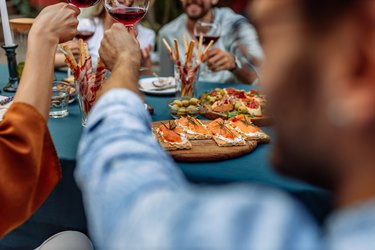
Make it ahead of time
If you're entertaining, the very best tip I have is this: make everything ahead of time. No need to completely finish cooking a roast chicken the day before, but you better get that bird dressed and ready to go in the pan on Thursday if your friends are coming Friday. Make the salad dressing, wash, dry and cut the lettuce. Set the plates out. Give yourself shortcuts so all you've got to do is pop things in a pan, assemble a dish or serve dessert. (See "dinner party purgatory", above.)
Make the kitchen a stress-free zone
If you're learning to cook so you can dazzle your friends, you are my people. The trick is simple: never lose your cool. You'll want to. But don't. Burn the sauce? No problem. Is the chicken less golden than you thought? Fine. Like Julia Child said, "never explain, never apologize." Just serve your meal with a smile. Turn down the lights, put on great music and enjoy.
A note about feeding kids
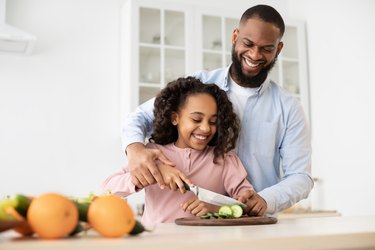
If you're learning to cook because you are now a parent and can no longer spend three hours trying to replicate Ina Garten's most complicated masterpiece every night, you are also my people! As a parent to four small kids, I could be cooking myself to death, but I've found my zone. After years of trial and error, my rock solid routine is this: make only one dish for everyone, serve kids very tiny portions (and more of whatever they like), roast all the vegetables and re-purpose leftovers so I'm not a slave to the stove. But this works for people without kids too.
Pro tip: Plan your meals
With a small amount of thought, you can make at least two meals out of many foods: The leftovers from roast chicken practically beg to be turned into chicken noodle soup. Hard boiled eggs start as a snack, then a topper for green salad, wrapping up the week between bread as egg salad. Think about what else you can do with each ingredient or entree without cooking from scratch again AND using all the food you paid for.
How to learn basic skills
Recipes aren't typically written with beginners in mind, so they're full of terms (and tools) you might not be familiar with. Here are the most used:
Cooking do's and don'ts

These skills will always involve a pan over heat (rather than the oven).
- Saute: To fry in a hot pan with oil, butter or other fat.
Do: Test the pan by adding a drop of water. If it sizzles, you're ready to saute.
Don't: Crowd the pan. When in doubt, cook in batches and set the cooked food on a plate nearby while you finish up the second batch.
Do: Consider whether you want your food to have browned edges or stay soft. To achieve caramelization on the edges, give your food several minutes without stirring or flipping. Want a soft texture, like onions, for example? Stir often.
- Simmer: To cook at a steady temperature just below boiling.
Do: Keep an eye on the pot, stirring occasionally.
Don't: Turn up the heat if the simmer gets too low. Put a lid on the pot for a few minutes and allow the simmer to return.
Do: Add more liquid to the pot if needed.
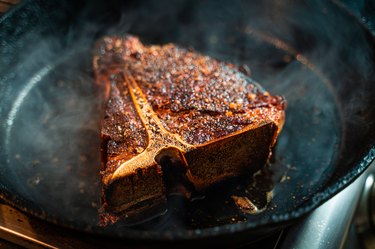
- Sear: To quickly cook the surface with high heat (typically meat).
Do: Allow your pan to get hot very first, then add your oil, THEN add the ingredient you want to cook.
Do: Take meat out of the fridge 20-30 minutes in advance to bring closer to room temperature before searing.
Don't: Be surprised by pops and sizzles. Be careful!
Do: Season each side of meat with salt and pepper before adding to the pan.
Don't: Forget to sear the ends of a roast or other large cut. Searing works best when it's done on every surface.
How to use a knife 101
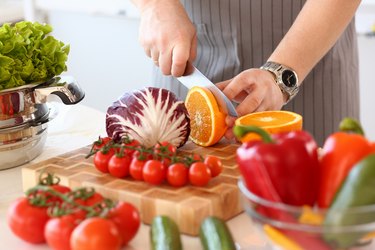
Basic knife skills are so important to cooking. Not just for safety but also to get the results you want. The New York Times has an excellent visual aide and keep these general rules in mind:
- Keep your blade sharp (It's safer than a dull blade!)
- Tuck your fingers under so even if you slip, your hands are still safe.
Instructions you'll see often:
- Slice: To cut evenly into strips.
- Dice: To cut evenly into small squares.
- Chop: To cut into medium-sized pieces.
Items That Are Nice To Have
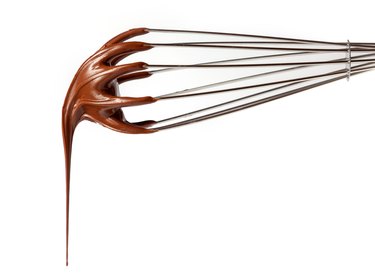
Tongs. These make you feel fancy but they're practical too: Flipping meat in a pan, or serving pasta, is much easier with tongs.
Colander. Stainless steel means you'll never worry about melting plastic under boiling pasta water.
Whisk. To make scrambled eggs, salad dressings, pancake batter or even gravy, there's no substitute for a whisk. You'll get all the lumps out, while adding air for a fluffier finish.
Peeler. Jobs get done faster with the larger blade on a Y-shaped vegetable peeler.
Microplane zester. Nothing gets lemon zest or parmesan cheese quite so fine. It's another fancy chef's tool that makes you feel accomplished (even when you're still working on your skills.)
Pepper mill. Freshly cracked pepper has a totally different flavor than something you tap out of a jar, and often adds another layer of delicious flavor to anything from pasta to steak.
Easy cooking projects for beginners
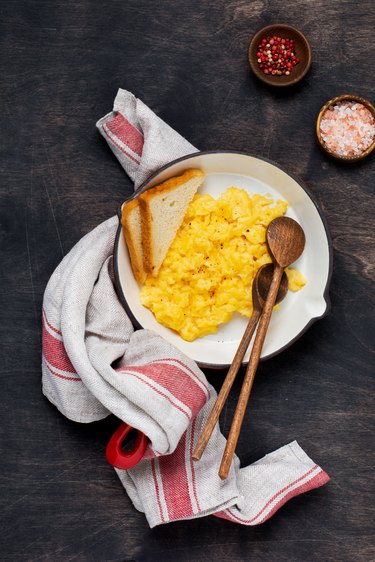
Scrambled eggs aren't just for breakfast, though an excellent choice. Once you nail the technique for fluffy scrambled eggs, top them with salsa, pesto, avocado or use the eggs as topping for toast.

Pancakes are the ultimate weekend treat and this recipe gets you fresh and fluffy cakes every time. Reliable. Or go for a healthier version with almond flour and blueberries.
The options for stir-fry with veggies are endless. Just cook your veggies in chicken broth, or with noodles or on top of a heaping bowl of fresh rice.
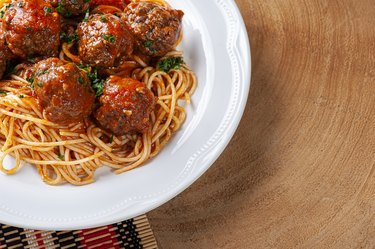
Spaghetti with homemade tomato sauce is a classic way to impress friends, or make yourself a great dinner to eat throughout the week. Use fresh tomatoes for a quick and easy sauce or splurge with time and spend an hour simmering bolognese. If you have an Instant Pot, make one-pot spaghetti with meat sauce this very instant. You won't regret it.
Classic meatballs are delicious served straight up, on a bun with tomato sauce or of course, on top of spaghetti. Even easier, some meatballs can be baked for less mess, not to mention hands-on time in front of a spattering stove: start with turkey pesto or Salisbury Steak meatballs.

Roasted chicken not only comes out juicy and tender with a gorgeous golden skin, but you can repurpose the rest of that bird--plus the accompanying roasted veggies--to make homemade turkey (or chicken) noodle soup. (No roasted chicken? Use rotisserie chicken.)
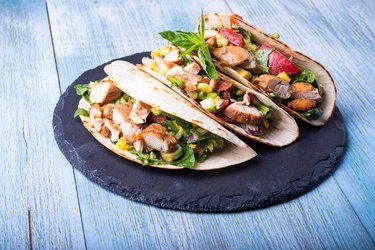
Tacos are another easy-breezy dinner you can dress up a hundred ways. Start with something like steak tacos, then use the leftovers to make taco casserole or taco soup. (Tip: Want a shortcut to fish tacos? Heat up fish sticks and serve them on street taco sized tortillas with fresh coleslaw. Perfection in minutes.)
Super Easy Soups: Whip up a batch of silky (dairy-free) tomato soup or beginner's broccoli soup and you'll have lunches for the week, plus enough to freeze for later.
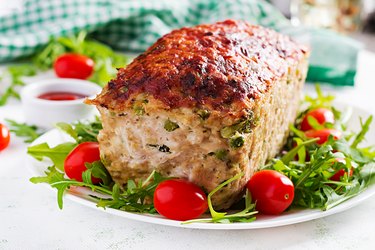
Meatloaf. This classic meatloaf comes with a sweet tomato sauce on top. Mini meatloaves cook faster (and you have the option to use half mushrooms instead of meat). When you're ready to get fancy, go even smaller with muffin pan meatloaf plus mashed potatoes.
Homemade salad dressings are such a simple way to eat better, with less sugar or fillers than anything you'd get in a jar, which translates into great flavor. Try:
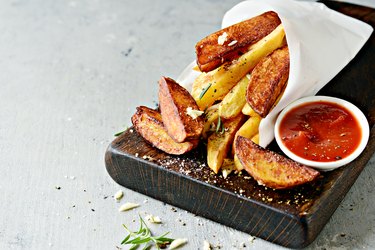
Roasted wedge potatoes are the side you can serve with anything, from roasted chicken to meatloaf. And when you have extras, re-use those potatoes to make a frittata for breakfast or lunch later in the week.
Garlicky greens start with a humble bag of frozen spinach. All you need is a saute pan, some olive oil and a splash of wine to make the best side dish spaghetti ever met.
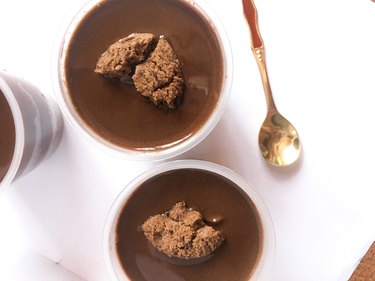
Chocolate mousse is not only simpler than you think to make, but just as decadent as it sounds. The perfect way to end any great meal.